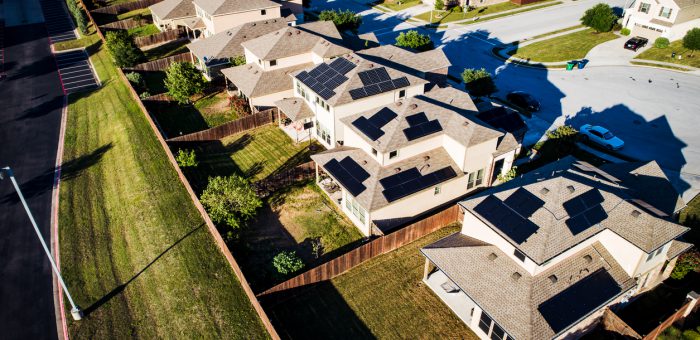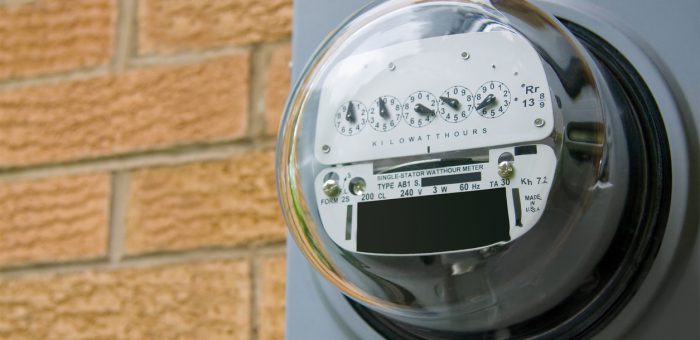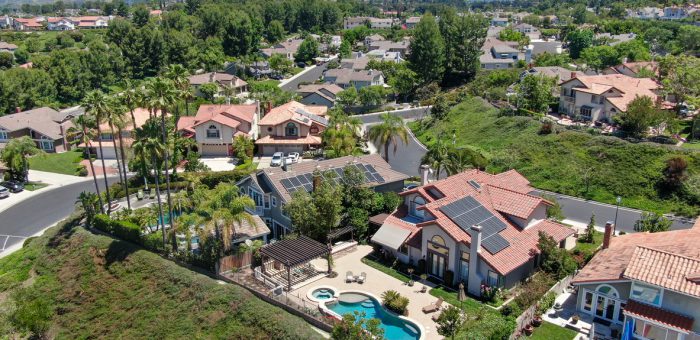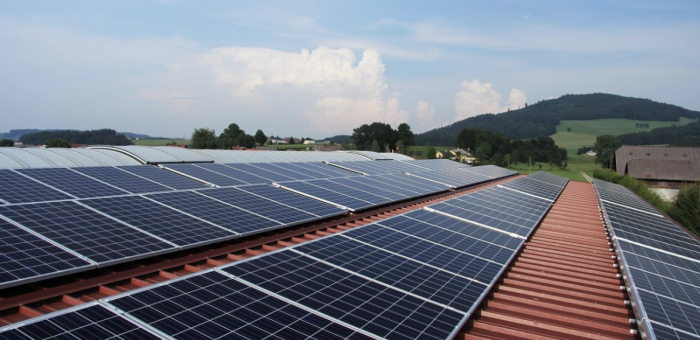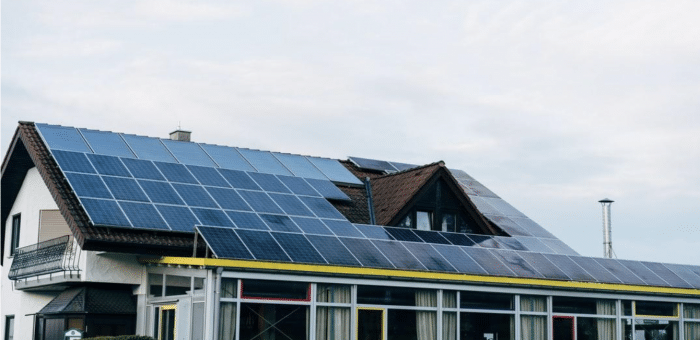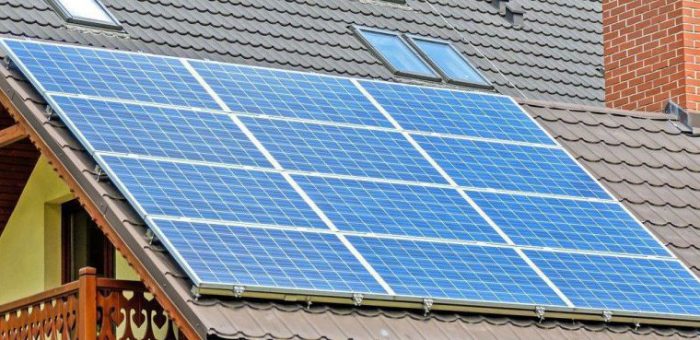The term ‘solar energy’ is very much what it sounds like — energy converted from solar rays and used in everyday life. It’s been around for quite some time and has many financial and environmental advantages over traditional energy sources. So it’s reasonable to wonder why more people aren’t using it.
The truth is that it hasn’t been affordable for most people until quite recently. Similarly, global warming and carbon emissions haven’t been taken that seriously until the last few decades. For these reasons, it’s easy to see why some people aren’t in a big rush to switch.
However, this is beginning to change. Thanks to recent scientific research, the benefits of solar energy are undeniable. This is why governments worldwide are working to make it more available, even going so far as to offer subsidies and tax incentives.
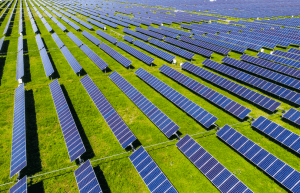
Solar panels
And now that solar is more popular than ever, manufacturers are competing to make simpler, more robust, cheaper, and more versatile solar energy systems. Today, relying on solar energy isn’t just possible; it’s often the best choice available.
[ctafirst]
Solar energy is used by countless households and businesses worldwide, and we believe the only reason more people aren’t switching is that they don’t know all of their options. This is understandable, as learning how solar works, setting it up, and finding the best price can be challenging. That’s why companies like Power Wizard exist; we have all the knowledge you need regarding rates, regulations, incentives, and more. We take the hassle out of switching to solar and present you with the best options for you.
Let’s get started by exploring what solar power is, how it’s used, and its potential for future applications. If you’re looking for a more sustainable, eco-friendly energy source for your home, keep reading to learn if switching to solar power is right for you.
Solar power definition
Believe it or not, the sun doesn’t actually create solar power on its own. It does, however, produce the radiation that is used by machines to create it. Solar power is the energy directly or indirectly harnessed from the sun’s natural radiation as it hits the earth’s surface. There are two ways to generate electricity this way:
- Using the sun’s heat to create thermal energy.
- Using photovoltaic cells, more commonly known as solar panel cells.
Solar power is a type of energy collected exclusively from nature. It’s considered renewable — or non-depletable — because you can harness it freely without removing resources from the environment. After all, it’s not like you need to worry about the sun’s rays running out (for a few billion years, at least). Other types of renewable energy include wind, hydraulic, geothermal, and tidal.
Thanks to modern technology, thermal solar energy has countless applications and is used all over the world. Though any country or region can use it, places with high levels of solar radiation year-round, such as the southwest United States, tend to get the most value from it. Because places like Texas and California experience so much solar radiation, it’s easy to harvest it for heating, air conditioning, residential hot water, water distillation, drying, and more.
The first photovoltaic cell could convert the sun’s direct energy into electricity, sufficiently powering everyday household equipment. Nowadays, many types of photovoltaic cells are highly efficient at producing electricity from the sun.
Solar panels are becoming not only better but cheaper as well. The U.S. Department of Energy (DOE) estimates that the cost of manufacturing a single solar panel has been steadily decreasing, dropping 10% every year on average. This surge in affordability could make solar energy a standard approach to powering homes and private property instead of a novelty item that only high-income individuals can afford.
Energy derived from solar radiation falls into four categories, depending on the collection method and the type of energy harvested.
- Passive solar gain: This results from solar rays hitting a building with no equipment or tools for harvesting it. An example is opening your curtains, using sunlight instead of electric light to illuminate the room. Modern buildings are designed with solar radiation in mind. In the UK, passive solar gain contributes around 14% to heating demands.
- Solar thermal energy: This method uses a solar thermal panel, which differs from the solar panels you often see on houses. Thermal panels heat up from direct radiation exposure, sending that heat into your home through a working fluid. This approach can help reduce air and water heating costs when utilized efficiently.
- Concentrated solar energy: This is when solar rays hit a reflective surface, such as a mirror, and are redirected towards a center point that collects their heat. Inside this center is a thermal fluid that, when heated, makes energy transfer and electricity generation possible.
- Photovoltaic solar cells (solar panels): These are probably what come to mind when you hear the term “solar energy.” They undergo a physiochemical reaction that allows them to collect the energy of the sun’s radiation and convert it directly into a usable electric current.
While all of these systems can and have been used in residential homes to reduce energy consumption, the type you’re most likely to find marketed toward homeowners is photovoltaic solar cells.
Solar thermal energy and concentrated solar energy aren’t mainstream yet, and passive solar gain is more feasible to implement during the construction of a new house rather than making this costly adjustment later on.
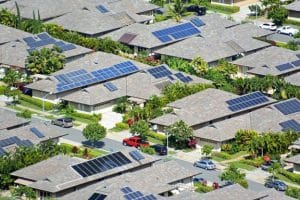
How does solar energy work?
Solar energy is generated by turning heat and light energies into electrical energy — similar to many other types of naturally-sourced energy. There are two ways to create solar energy.
- You can use the heat of the sun to boil water and create steam.
- You can use photovoltaic cells to create a physiochemical reaction.
Photovoltaic cells are made from one to two layers of silicon semiconductors. When sunlight hits the cell, it generates a difference in voltage between the different layers. This results in an electric current that flows into the next component of the solar module.
[ctafirst]
The solar energy production process correlates positively; more sunlight hitting the panel means more electricity. The panel’s geographic location, how sunny it is, and the angle of the sun’s rays all determine how much energy you get. While solar panels can still produce electricity on cloudy days and during the winter months, you can expect to see less of it.
Determining the best angle for your solar panels depends on your geographic location and the time of year. For most homeowners, the ideal angle is between 30 and 45 degrees. For a more accurate estimation, you should have your panels 15 degrees minus your home’s latitude in the summer months and 15 degrees plus your latitude in the winter months.
A single solar panel consists of multiple photovoltaic cells. They function as an intertwined system and have a determined voltage to ensure the cells work properly and eliminate the risk of meltdown.
Solar panels don’t generate usable electricity on their own, however. Another component, the solar inverter, is responsible for converting the resulting current from the photovoltaic cells into a usable one.
To use solar-generated electricity in your home, you must connect it to the electrical panel. This allows it to evenly and safely distribute the energy as needed through electrical plugs. For safety reasons, a miniature circuit breaker (MCB) is installed in the module, which connects to the DC and AC currents via isolators. MCBs prevent high-surge currents, which can fry the system.
What is solar power used for?
Because the sunlight that makes solar power possible literally falls from the sky, it’s one of the most abundant and versatile types of renewable energy. Below are a few everyday uses most people can benefit from.
Heating water
Solar-powered water heaters are incredibly popular in hot and desert regions worldwide. Instead of photovoltaic cell panels, it uses collector panels, which are dark-colored to absorb heat. These allow the system to collect solar radiation as heat and then transfer it to an insulated water reservoir.
This doesn’t affect the water’s purity or quality, so it can be used to bathe, cook, and wash your clothes. Aside from installation and maintenance costs, this setup heats your water for free! It’s often used on a smaller scale in residential homes, serving as a partial transition toward solar energy.
Providing energy on the go
Solar panels aren’t just home improvement projects; nowadays, you can find lightweight and portable photovoltaic panels! These miniature setups come in a wide variety of sizes and materials, allowing you to carry solar energy with you anywhere.
Solar energy enables travelers, sailors, and otherwise off-the-grid individuals to access electricity without needing to connect to a power grid in their current area. Any unused solar energy can be stored in high-capacity batteries, which can be used at night when generating solar energy isn’t feasible.
Solar drying
Hang-drying laundry in the backyard is the purest form of solar drying, but that isn’t always an option. Instead, you can use a solar dryer, which utilizes the sun’s power to optimize the drying process of clothes, fruits, vegetables, and meats.
Solar dryers remove excess moisture content, usually from foods, by maintaining an airflow over the substances. In direct solar dryers, the items are exposed directly to the sun’s rays, often through a glass panel. Indirect dryers, on the other hand, use a black surface to absorb the heat from the sun for drying but don’t expose the items directly to the sun’s radiation.
Solar air heating
Solar air heating is a type of solar thermal technology. Instead of water, it uses air as the primary fluid to transfer the sun’s heat collected into your home.
This is done by installing several strategically placed solar heaters to gather heat from the sun throughout the day. It then passes the heat toward an air pump that distributes it throughout the house.
Solar air conditioning
During the summer months, especially in the American south, air conditioning is the thing that drives up your household’s electricity bill and carbon footprint the most. Solar-powered air conditioning is a lucrative solution, and there are a few ways to go about it. The most straightforward (and common) method is to use photovoltaic solar panels, which can produce all the electricity your HVAC unit needs under the right conditions.
[ctafirst]
You can also rely on passive solar gain, creating open-loop air conditioning that circulates air based on its temperature and density around the house, removing hot air and replacing it with cold. Better yet, you can utilize both methods: use passive solar gain and save your solar energy for when you need it!
What is concentrated solar power?
As the name suggests, concentrated solar power is generated by collecting many solar rays into a singular location. This is often done through mirrors and reflective surfaces spread out over a large area, preferably with a lot of sun exposure. At the shared point of reflection is your thermal-energy-receiving fluid, which heats up under the multiple rays, transferring the energy to other areas.
This creates enough thermal energy to spin turbines that either generate electricity or power an engine directly. This method allows power plants to gather concentrated solar energy for use in large-scale, energy-intensive operations, such as oil recovery, industrial food processing, and water desalination and distillation.
While concentrated solar power is great for large industries, it’s not really suited for homeowners looking to lower their energy bills. The technology isn’t as commercially available on a smaller scale, and its concave shape makes it harder to fit on your roof. Plus, solar panels are far easier to maintain.

Advantages of solar energy
In the past, the sight of solar panels was uncommon at best. Today, solar energy is being used on a global scale. The economic and environmental benefits have proven themselves, and individuals and businesses can take advantage of them.
Switching even partly to solar can make a noticeable difference in your life. In addition to increasing your home’s value, the following are a few more advantages of solar energy.
Cash incentives and tax breaks
The cost of installing a solar module has always been the biggest hurdle in getting people to switch, even if it’s considerably cheaper than before. However, as climate change and renewable energy continue to be hot topics, the U.S. government is doing its part to make solar energy accessible to the public. To this end, it offers tax breaks to home and business owners who invest in renewable energy sources — solar energy, in particular.
The Residential Clean Energy Credit means all Americans who install a solar module in 2022 or 2023 are eligible for a 30% federal tax credit. Considering the median price of a solar energy system per household is just under $30,000, the tax cut could save you around $9,000. Combined with the great deals you can find with Power Wizard’s help, solar energy is suddenly much more affordable.
Furthermore, many local programs offer cash and discount incentives for homeowners looking to purchase solar panel systems. Like in Texas, Houston partnered with Solar United Neighbors to create the Texas Solar Switch Houston program, making rooftop solar panel installation affordable and accessible. The program plans on generating 5 million megawatt hours (MWh) per year of local solar power as part of the City of Houston’s Climate Action Plan. This is enough to cover the electricity needs of over 350,000 Texan households. The best part? Houston residents can sign up for free! California has also made big moves when it comes to incentives, encouraging state residents to go solar. Incentives include the Self Generation Incentive Program (SGIP), net metering to receive credits for the electricity generated, Property Assessed Clean Energy Program (PACE) to name a few.
In 2018, the average Texan household consumed 1,176 kWh of electricity per month — or around $115 of compensation per month, or $1,380 annually. Similarly, the CPS Energy Solar Rebate program offers households up to $2,500 per completed solar energy project. The project also provides an additional $500 for installing locally sourced solar panels instead of imported ones.
Residents in California can expect rates of almost 30c/kWh but use much less on average than other parts of the United States. For most homeowners in the US it takes on average eight years to break even on their rooftop solar panels.
If switching to solar energy feels beyond your reach, look for government programs you could take advantage of. Keep in mind that if the popularity of solar energy continues its upward trend, these incentives might disappear, so take advantage of them as soon as possible. There are many of them at both federal and state levels, so you could save more than you think!
Decreased electricity costs
Let’s be real: energy is expensive, and it’s not getting any cheaper. In Texas, the average electricity rate was 18.48 ¢/kWh in 2022. While this is less than the national average of 21 ¢/kWh, it’s still higher than it used to be.
Based on the average energy consumption of Texan households, the average electricity bill is $162 per month. This adds up to just under $2,000 per year on electricity, not counting the fluctuation of energy use between summer and winter.
While a $30,000 solar module can seem quite expensive, using it can save you $2,000 per year on your energy bill. Dividing 30,000 by 2,000 gives you 15, which is how many years it would take for your system to pay for itself. This means that the earlier you start, the more you’ll save in the long run.
Keep in mind that these estimates are made before incentives and the 30% federal tax cut. How many of them can you take advantage of? Contact Power Wizard today and discover just how much value you can get from solar!
Reusable energy
Traditionally, energy is made from burning fossil fuels. There are two problems with this.
First, fossil fuels are the primary contributor to climate change. This is because burning them releases greenhouse gases that trap the sun’s rays in the atmosphere, causing global warming. In fact, residential energy use accounted for roughly 20% of all U.S. greenhouse gas emissions in 2019. The heating of our planet has already had adverse effects, such as unhealthy air, rising sea levels, and threats to the world’s ecosystems.
[ctafirst]
The second problem with fossil fuels is that they won’t last forever. In fact, they’re running low! Assuming our consumption habits don’t change, the world’s reserve of oil and natural gas is expected to last until 2052 and 2060, respectively.
To make things worse, what happens when demand exceeds supply? That’s right, the cost of said supply shoots through the roof! And you thought energy was expensive now?
Tackling both impending issues will be far easier if more people switch to solar. Since it’s renewable and reusable, you can cut or even eliminate your carbon footprint. The same can be said for your reliance on fossil fuels, as the depleting supply will affect you less, if at all. Solar energy can serve as a core pillar of energy independence.
Start looking into local solar energy providers today to take full advantage of these benefits. Texans, for example, can get help from Power Wizard, an energy empowerment company looking to help U.S. residents make better and more informed energy decisions regarding tools, providers, and energy types.
Is solar power renewable?
To determine whether solar is a form of renewable energy, you must first determine what makes an energy source renewable. For an energy source to be considered renewable, it must originate from a non-finite resource. While fossil fuels form naturally, they need millions of years to replenish, and we’re due to run out a lot sooner than that.
You also have to look at the materials used in the harvesting and energy conversion processes. When it comes to solar panels, how renewable they are depends on the type of panel, its efficiency, and the raw and fabricated materials required to manufacture it.
Solar panels may look smooth and sleek on the outside, but on the inside, solar modules contain numerous components essential to their functionality. What material the solar panel is made of depends on the use case. While most commercial solar panels can theoretically be exposed to temperatures of 185 degrees Fahrenheit, they function optimally at temperatures between 59 and 95 degrees Fahrenheit. Outside of this window, their efficiency starts to drop.
It’s important to consider that solar panels get hotter than the air around them, increasing their temperatures above recorded temperatures. With temperatures rising worldwide, solar panel efficiency has dropped between 10 and 25%.
Most commonly, solar panels are made of silicon, a naturally abundant element. You can mitigate the adverse effects of silicon mining on the environment by supporting solar panel companies that ethically source the silicon used in their panels. To reduce your carbon footprint even further, source your solar panels from companies that use recycled or recyclable materials in the manufacturing process.
Thanks to modern technological advancements, engineers can build transparent and colorful solar panels using perished crops and plant-based materials. Similarly, solar panel manufacturers are looking to reuse and recycle materials from old and outdated solar panels instead of sourcing new materials.
Solar turbines
You’ve probably heard of wind turbines, which look similar to windmills and use naturally occurring wind to generate electricity through movement. Sunlight doesn’t have the wind’s force, so how do solar turbines function? In short, steam serves the same purpose as wind.
Like concentrated solar energy systems, solar turbines are powered by reflecting sunlight toward a thermal fluid. You can do this with mirrors or dark-colored reflective panels that collect the sun’s heat. This heat energy warms the liquid until it boils, creating steam that spins the turbines of a power generator or engine. The result is electrical or heat energy that can power your air conditioning, water heater, and lights.
Additionally, thermal solar energy plants use one of two reflectors in their energy harvesting: parabolic trough collectors and Fresnel reflectors.
Parabolic trough collectors are U-shaped reflective surfaces that channel solar radiation into a pipe in the middle of the parabola’s focal point. This allows it to continue generating energy as the sun’s angle shifts from dawn to dusk. Each parabolic reflector heats the thermal fluid in the pipes until it reaches temperatures high enough to spin turbine blades or to power connected heating systems.
Linear Fresnel reflectors (LFR), on the other hand, are a collection of multiple flat reflectors mounted to a flexible frame. This allows them to automatically change the reflectors’ angle to always catch the most solar radiation and transfer it to a thermal collector, usually located in the plant’s center.
So, are solar turbines better or worse than plain old panels? Well, that depends on your situation.
The main advantage turbines have is that they take up less space than regular solar panels, making them more efficient in the eyes of many. In fact, the same square footage of solar turbines can produce approximately 70% more energy than regular photovoltaic solar panels. Furthermore, a single 100-watt solar panel can power multiple small devices simultaneously, like your laptop, phone, Wi-Fi router, and ceiling fan.
There are, however, some shortcomings that can’t be ignored. For one, solar energy isn’t available at all times of the day. And when it is, it fluctuates depending on the time of day, time of year, and geographic location. This prevents you from being able to rely on it as a primary power source, as batteries and other types of energy must be used to subsidize energy gaps.
Another problem with solar turbine technology is, ironically, the same heat it depends on. While the turbines can withstand hot steam up to around 1,000 degrees Fahrenheit, the heat transmission fluid currently used in solar turbines cannot reach temperatures above 750 degrees Fahrenheit. This dramatically limits the potential of solar turbines and reduces their efficiency compared to other types of steam-powered turbine engines, including fossil fuels.
For this reason, solar turbine energy is only recommended for use on an industrial scale. Installing a small solar turbine in your home will likely cost a fortune — with minimal benefits in return. Not to mention, finding a commercial option for residential solar turbines is almost impossible anyway.
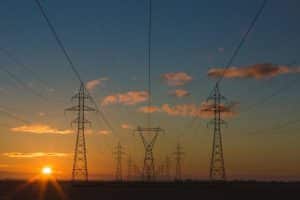
Solar panels
When you hear “solar energy,” these panels are probably what first comes to mind. An increasingly common sight in residential neighborhoods, solar panels are the poster children for solar energy and maybe even renewable energy as a whole (although wind turbines are probably a close second).
Solar panels — sometimes called solar electric panels or PV (photovoltaic) panels — are the primary components of a solar module. Each is a collection of individual but connected PV cells. From a distance, conventional solar panels are rectangular, organized together in a grid formation. They are often dark navy to optimize their absorption of solar rays, as dark colors absorb more heat than lighter ones.
[ctafirst]
There are many types of solar panels that differ in both materials and intended working conditions. By understanding each type’s strengths, weaknesses, and functions, you can make a more informed decision when choosing the best solar panels for your needs. Let’s break down the types of solar panels currently on the market.
Thin-film solar panels
Thin-film solar panels are over 300 times thinner than traditional solar panels and are made from a flexible material that lets them conform to various shapes and surfaces. Without the metallic support, the panels can be as thin as a single micron — which is one-millionth of a meter and thinner than a human hair.
Their lightweight and thin structure makes them easy to transport and install with little support. They’re also more flexible in sizing and can be custom-made to fit a specific area.
These panels use less material overall than their thicker counterparts. However, they’re harder to recycle because the cadmium they’re made from is considered a toxic element. Additionally, they’re less efficient at energy generation and only last between 10 and 20 years, which is just over the 8 to 10 years you can expect solar panels to pay for themselves.
On the bright side, they’re the cheapest option and can be a great way to get your feet wet in the renewable energy market, especially if you’re on a strict budget.
Polycrystalline solar panels
Polycrystalline solar panels are a mid-range solution that strikes a good balance between affordability and durability. They’re easier and faster to manufacture; made from raw silicon, they’re left to solidify in panels of their assigned sizes and shapes. However, their edges don’t require trimming, reducing the overall waste produced in the manufacturing process.
You can recognize them by their light blue color and speckled appearance because the crystals embedded within the material reflect sunlight. While not as thin as thin-film solar panels, they still only average around 220 microns and are more efficient at generating electricity from sunlight.
However, because their manufacturing process preserves the individual silica crystal, the panels are less heat tolerant and hard to use in high-temperature and desert environments. You can expect a polycrystalline-based solar module to last up to 25 years before its efficiency starts to degrade rapidly, requiring a replacement set.
Monocrystalline solar panels
Monocrystalline solar panels are the oldest type of solar panel technology but the most efficient at energy production per square foot. Unlike their polycrystalline counterparts, they’re made from pure, high-quality silicon. They’re poured into specialized molds, then cut and polished around the edges to create an even surface for optimal sunlight absorption. This final step produces a considerable amount of waste, drastically increasing the panel’s price, as it’s also incredibly time-consuming.
You can tell monocrystalline solar panels apart from the other types by their dark blue — almost black — color and smooth surface. They’re between 200 and 400 microns thick and require a metal frame for installation and to maintain their structure.
How do solar panels work?
Solar panels work through energy conversion: turning solar radiation into heat or electricity.
Solar radiation is the electromagnetic waves the sun emits. Hydrogen atoms constantly fuse in the sun’s core, resulting in solar radiation that carries massive amounts of energy and heat. We can categorize sunlight into three categories, from weakest to strongest: infrared, visible, and ultraviolet light.
While ultraviolet light carries the highest amounts of heat and energy, about 98% of it gets blocked by the ozone layer. Thus, solar panels are made to absorb both visible and near-infrared light, as they’re plentiful on the earth’s surface and still carry a lot of heat and energy. The solar panel system is responsible for receiving the energy-charged photons, while the silicon of the panels behaves as both an insulator and conductor, generating an electric current.
Inside the cell, electrons move from the negatively charged side to the positively charged one on the opposite end. This movement of electrons generates a small electrical current that can be transformed into usable electricity.
What are solar panels made out of?
At its most basic, a solar panel system is a silicon sheet of photovoltaic cells. As well as the wiring needed to transfer the electricity into a usable device. Most solar panel modules work on households or even larger scales. This means that more components are required for them to remain stable and function optimally.
Let’s look at the various components you can expect to find in the average residential solar panel module.
- Silicon solar cells:These photovoltaic cells convert the sun’s radiation into electricity. Numerous cells are connected in a flat structure to maximize the surface area.
- Glass panels:The silicon solar panels are pressed between two glass panels, providing more structure and protection from the elements. They’re around six to seven millimeters thick and add some weight to the overall solar panel structure.
- Aluminum framing:Aluminum framing is used because it’s lightweight but sturdy. It secures the panels in place at the optimal angle, protecting the cells from mechanical forces that may crack or splinter the edges of the solar panel.
- Wiring:Whether it’s connecting the various photovoltaic cells or attaching the solar panel system to the house’s electrical circuit, proper wiring is an essential component of a solar energy module.
Photovoltaic
Also known as PV, photovoltaic refers to the process of converting light into electricity. It relates to the production of an electrical current where semiconducting materials are exposed to the right wavelength of light. It’s a phenomenon that combines electrochemistry, physics, and photochemistry in its various parts.
Photovoltaic technology has a variety of commercial applications, from electricity generation and radio transmissions to irrigation pumps and light-sensitive receptors, also known as photosensors.
What is photovoltaic?
In solar energy production, photovoltaics are the type of cells commonly used in commercial solar panels. An individual photovoltaic cell or collection of cells is categorized as a nonmechanical device that converts the energy of light photons present in solar radiation into electricity.
Some types of photovoltaic cells can convert artificial light into electricity, albeit less efficiently. This would require high-power, incandescent fluorescent light bulbs that produce enough high-energy light to trigger the photovoltaic reaction in the solar cells.
How do photovoltaic cells work?
A photovoltaic cell is a nonmechanical electronic device consisting of two layers of a semiconductor. It’s usually made from silicon and can convert light directly into electricity via the photovoltaic physicochemical phenomenon.
When multiple photovoltaic cells work together to increase the amount of electricity produced, it’s called a photovoltaic system. The two types of photovoltaic systems are called standalone and grid-connected systems, and they differ in how their photovoltaic cells are connected.
A standalone photovoltaic system connects photovoltaic cells to optimize a battery system to continuously produce an electric current. This type of system is used to power remote structures that aren’t connected to the area’s electric grid.
[ctafirst]
By contrast, a grid-connection photovoltaic system is integrated with the local energy grid. This type uses solar and grid electricity simultaneously to ensure it always meets the energy requirements of the user’s structure.
Unlike human cells, photovoltaic cells aren’t microscopic. The effectiveness of a solar panel is determined primarily by how exposed it is to the sun. Photovoltaic cells need to cover a wide surface area, so their size is relatively important.
The average size of a photovoltaic cell has been steadily growing over the past decade. In the early 2010s, the standard size of a photovoltaic cell was 156 by 156 millimeters. This is approximately 6.1 inches in height and width. In the 2020s, the average photovoltaic cell is considerably larger, at 210 by 210 millimeters per cell. This is just over 8.2 inches in height and width. That’s almost an extra third in about a decade.
So how many cells and solar panels are needed to power your household or infrastructure? You can calculate this by taking the amount of electricity generated by the photovoltaic system. Then see how it compares to the average energy consumption you’re looking to subsidize.
To do this, use the photovoltaic formula by inputting the values provided by your solar module vendor and local averages. The photovoltaic formula is E = A * r * H * PR.
Let’s break that down:
- Eis how much energy you produce, measured in kilowatt-hours (kWh).
- Ais the total surface area of the photovoltaic cell panels, measured in square meters (m²).
- ris the solar panel yield, measured in percentage, as specified by the manufacturer.
- His the average annual solar radiation in your geographical area.
- PRis the performance ratio, which ranges between 0.5 and 0.9 of the default value, depending on the photovoltaic cells used.
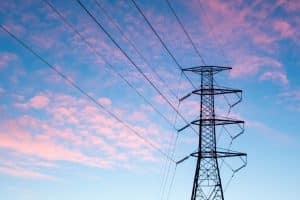
Do solar panels work on cloudy days?
Even in Texas, the number of fully sunny days per year varies greatly. It ranges from 86 days in Victoria to 165 in Midland-Odessa. This means that, even in the “sunniest” area, over half the year sees at least some clouds. After investing so much into renewable energy, you probably want to know how your system will work in less-than-ideal conditions. San Diego, California has 146 clear days while Sacramento has a whopping 269 days of sunshine a year, making your solar installation a great investment.
While sunlight exposure is a huge part of how well your system performs, temperature is also at play. Fortunately, most manufacturers provide a recommended window of heat and cold tolerance. As long as it isn’t cloudy enough to drop temperatures below this window, you probably won’t see a significant drop in performance.
In cloudy and rainy weather, you can expect your solar module to produce anywhere from 10 to 25% less electricity. There’s some variance here depending on the sensitivity of the photovoltaic cells and the thickness of the cloud cover. This occurs due to the photovoltaic effect of the panels under both direct and indirect sunlight.
Of course, just because conditions aren’t great doesn’t mean your system will just stop working on the spot. Instead, you’ll see a gradual decrease in electricity production correlating to the current weather conditions. During the highest hours of the sun with clear weather, most commercial solar panels can generate between 250 and 400 watts/hour.
There are a couple of ways to check your solar panels’ electricity production. Some providers offer an in-home control panel connected directly to your solar energy system. It provides insights into the efficiency and condition of your solar panels so you can tell if they’re underperforming or facing an issue.
A more straightforward approach is to check for shade. If outdoor objects are still casting shadows, it’s safe to assume your solar panels are still working. If not, chances are the electricity production in the cells has slowed down or even stopped altogether.
[ctafirst]
Your area’s ratio of cloudy to sunny days should be one of the determining factors in choosing solar energy. For example, high-efficiency solar panels, such as monocrystalline cells, would still provide you with more energy than their polycrystalline and thin-film counterparts on cloudy days. So this may be the way to go if you live in a particularly cloudy area.
The same concept applies to heavy fog cover. It’s estimated that solar panels can only work at 50% efficiency when there’s fog. This is more than an average day with a dense cloud cover.
Shopping for solar panels is probably the most challenging part of owning them since there are numerous factors you need to consider before deciding on a solar panel type or manufacturer. However, don’t let this dissuade you, as you can get through this hurdle with Power Wizard‘s expertise.
We conduct market research and present you with everything you need to know. This includes local offers, government regulations, tax breaks, and cash incentives.
Do solar panels work at night?
It might shock and confound you to learn that there’s less sunlight at nighttime than during the day. But all jokes aside, do solar panels work at all when the sun goes down?
Electricity production from solar panels depends on how much sunlight they’re receiving. While the time of day isn’t a deciding factor, it is an indicator of how much sunlight you can expect to see. For instance, you can expect the output of your solar module to increase gradually during the first hours of dawn. It will peak at noon, in the afternoon, and into dusk. The same principle applies to the time of year, where the number of daylight hours changes.
Because the moon reflects the sun’s rays, you can technically get some value from your solar panels by harvesting moonlight. But the output would be very low, if not undetectable. With the proper equipment, you can observe if your solar panels still produce energy for a few hours after dusk. This is when they can still capture a minuscule amount of sunlight.
It isn’t just residential solar modules with this issue; it’s an industry-wide limitation. A solar panel’s reduced output during the night creates what’s known as the duck curve. When plotting solar energy generation, demand, and consumption on a graph, the shape resembles that of a duck.
This highlights the increased demand for energy during the early morning and night hours when solar energy isn’t readily available. No matter what kind of solar setup you use or how big it is, your energy consumption-generation graph will always look something like this.
Solar Batteries
Fortunately, there’s a solution to this issue: solar batteries! When you gather more energy during the day than you can use, these devices store the excess energy for you to use at night. Electricity generation in solar panels is capped not by consumption levels. Rather, by solar radiation levels for the time of day, time of year, and geographical location.
Any electricity generated by your solar panels that isn’t used up immediately by your home can be rerouted and stored in solar batteries. This alone makes it worthwhile to use your solar module at night.
In other good news, solar panels that can generate electricity at night are being developed as we speak. These so-called “anti-solar cells” produce electricity through differences in temperatures experienced by the surface of the panels and not through solar radiation.
Traditional solar panels — whether monocrystalline, polycrystalline, or thin-film — are all highly efficient thermal radiators. During the day, they become hotter than the ambient temperatures around them. But at night, they reach temperatures well below the ambient air due to a lack of an external heat source. This temperature variation allows some kinds of solar panels to generate energy even at night.
In a study by Stanford University, scientists added a thermoelectric generator to solar panels during the night hours after they stopped producing solar-generated electricity. A thermoelectric generator (also called a Seebeck generator) is a device that converts the flux of different temperatures into an electric current through the difference in its components’ charges.
These generators are small, portable, and easy to manufacture and maintain, as they don’t contain any mechanical or moving parts. In fact, you can expect thermoelectric generators to become part of the future of residential solar panels. This will allow you to generate energy reliably even at night.
For now, though, there’s one last piece of good news. At night, solar panels release all heat accumulated over the morning hours — in the form of infrared radiation — into the much cooler night air. While the amount is considerably smaller compared to solar radiation, this heat can still be converted into electricity.
Solar power for homes
Buying and installing your first solar module shouldn’t be a hasty decision. This system will last 10 to 50 years, so it is a commitment. You should also consider the financial aspects. Like, how much you’ll spend on installation and maintenance. Or how much solar will save you in energy bill expenses, tax cuts, and cash incentives.
Switching to solar can significantly reduce your electricity bill. It can also end your reliance on the local power grid and reduce your household’s carbon footprint. All while earning you cash incentives and tax cuts. However, it’s best to remember that you don’t necessarily need the highest-rated or most expensive solar power solution. Your situation is unique, so you should choose a solar energy system that suits your needs. With little to no experience in the solar energy industry, it can be hard to figure out your needs.
Fortunately, you have an ally in Power Wizard. We provide the tools, information, and products to help you make energy decisions confidently. Gaining energy independence with solar panels can be a complex process. We’re here to help solve all your current and future issues. Let our team recommend the best rooftop solar panels plan today. And receive a free quote to set your green energy journey in motion.
House solar panels
Solar panels come in various shapes and sizes. Your best option will depend on your budget, available space, and local climate. Don’t compromise on any of these points; if you do, you’re ultimately shooting yourself in the foot. Remember, this will be your primary energy source (or one of them) for the next 10 to 50 years. So you should be completely satisfied with your upfront payment.
The cheapest option, by far, is thin-film solar panels. These average at around $1 and $1.50 per watt. You can expect to pay anywhere from $6,000 to $9,000 for a 6kW solar setup. The average Texas electricity bill per household is $213 per month simply based on their high usage during the summers and $170 in California. Along with local incentives and tax cuts, these panels may pay for themselves in about 8 years.
However, thin-film solar cells aren’t the most durable or efficient choice. You need a larger surface area to produce enough electricity, and the panels only last between 10 and 20 years. After that, you need to replace the entire module.
[ctafirst]
While environmental conditions can affect their lifespan, you can extend it by performing regular maintenance. Despite this drawback, their flexible and lightweight nature makes them ideal for homes with a lot of irregular surface space that won’t accommodate rigid solar panels as easily.
Polycrystalline solar panels are also budget-friendly, costing around $0.90 to $1 per watt, and can be purchased for about $6,000. Like thin-film solar cells, these may pay for themselves in about 10 years.
However, they aren’t as easy to install or work around as the thin-film variety due to their thicker and heavier nature. Their aluminum frame and glass slates both structure and protect the panels, but at the cost of increased weight. As the surface must be level and strong enough to support their weight, installing them can be an ordeal. Still, with proper maintenance, polycrystalline solar panels may last up to 25 years.
We won’t sugarcoat it: At around $30,000, this is a hefty investment, but one that pays itself forward. These high-performance solar panels could be powerful enough to grant you independence from the primary power grid. Furthermore, slash your electricity bills and taking advantage of government-supported tax cuts and cash incentives. Then you can make your money back quicker than you think.
Solar batteries
One of the biggest drawbacks of solar energy is that it’s not available around the clock. Traditional solar panels are barely functional at night. Their efficiency can drop from 10 to 25% during cloudy and rainy weather. For households that rely partially or entirely on solar-generated electricity, installing a battery system is essential to keep electricity flowing.
Not to mention that relying solely on the local grid means you’re at the mercy of power outages. While these are usually debilitating, solar batteries allow you to shrug them off since you always have energy. Even when the grid is unstable. They also let you charge your electric cars at night without having to pay a third party.
How do solar batteries work?
No matter how much solar energy you gather, you can only use so much at a time. Though the excess usually goes to waste, solar batteries give you the most for your efforts.
While these devices are connected to your home’s solar power system, they store any electricity generated by the panels but not consumed by you. The reserves kick in when your solar panels stop producing enough electricity for your needs. This shift is seamless, so you won’t notice any difference even when the weather changes or the sun sets.
The optimal type of solar battery is a rechargeable battery. This stores the energy as DC electricity as soon as it enters the battery. When connected, the battery’s system can directly transform the DC current into an AC current. This can safely and reliably power household appliances and lights. A battery with a 5kW capacity can power basic household appliances, such as your fridge, TV, and lights, for around 10 hours.
However, unlike solar modules, batteries only last between 5 and 15 years. Then they’re due for a replacement, even with minimal use. So when you notice your batteries losing their charge earlier than expected, you should shop around for backups.
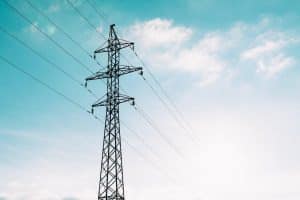
Choosing the right solar energy solution
The world of solar energy solutions is expansive and complex, but it’s more accessible than ever before. It isn’t just industrial-scale manufacturers and energy providers using it anymore. Homeowners and people living in rural areas can all benefit from solar power. Thanks to newfound affordability, climate goals, and tax incentives, now is the best time to start harnessing the sun’s power.
[ctafirst]
Before you take the plunge, you need to know your situation and how best to move forward. You can use Power Wizard’s calculators to calculate your home’s carbon footprint, energy consumption rates, and how much you can save on the right Texas electricity plan. To top all that off, you can get a free quote on how much you can save on rooftop solar panels! Contact us today and let us be your guiding light in the world of renewable energy!
